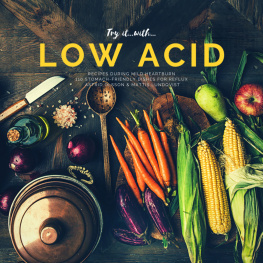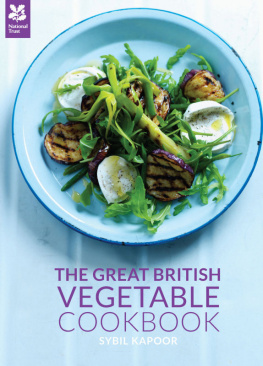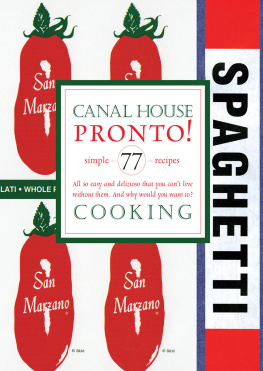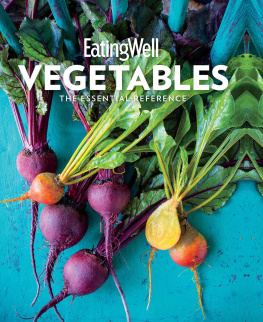Also by Marcella Hazan
The Classic Italian Cook Book
More Classic Italian Cooking
Marcellas Italian Kitchen
Essentials of Classic Italian Cooking
Marcella Cucina
Marcella Says...
Amarcord: Marcella Remembers

SCRIBNER
An Imprint of Simon & Schuster, Inc.
1230 Avenue of the Americas
New York, NY 10020
www.SimonandSchuster.com
Copyright 2016 by Marcella Hazan and Victor Hazan
Illustrations copyright 2016 by Karin Kretschmann Lubart
All rights reserved, including the right to reproduce this book or portions thereof in any form whatsoever. For information, address Scribner Subsidiary Rights Department, 1230 Avenue of the Americas, New York, NY 10020.
First Scribner hardcover edition July 2016
SCRIBNER and design are registered trademarks of The Gale Group, Inc., used under license by Simon & Schuster, Inc., the publisher of this work.
For information about special discounts for bulk purchases, please contact Simon & Schuster Special Sales at 1-866-506-1949 or .
The Simon & Schuster Speakers Bureau can bring authors to your live event. For more information or to book an event, contact the Simon & Schuster Speakers Bureau at 1-866-248-3049 or visit our website at www.simonspeakers.com.
Interior design by Erich Hobbing
Jacket design and illustration by Nick Misani
Photograph of Marcella and Victor by Barbara Banks
Library of Congress Cataloging-in-Publication Data is available.
ISBN 978-1-4516-2736-7
ISBN 978-1-4516-2737-4 (ebook)

In the mornings of the last two years of her life, after taking one more sip from the very large cup that I had filled for her with espresso, Marcella went to her desk where she let her thoughts loose in the food markets she had known, bringing them again to the products on which her gaze had stopped, products which, in her kitchen, she could transform into dishes of haunting deliciousness and stunning simplicity. She set her thoughts down in a tight, round, feminine hand, filling the pages of lined notebooks. She wrote in Italian, rarely stopping to revise, moving quickly to the end of a line, as though to stay ahead of times encroaching passage.
I translated and organized those pages. As the only member of this partnership left standing, I shall exercise my right to pen a dedication. This guide is the testament of a woman who based her cooking life on the truth of every dish she cooked and taught, the vigorous truth of clear, uncluttered taste, taste that arises neither from obeisance to dogma, nor from a craving for attention, but evolves inspired by, and respectful of, the ingredients that nourish it. To that woman I dedicate this work.
To Marcella.
PREFACE
WHAT AM I DOING HERE?
Victor Hazan
For sixty years of an inseparable relationship, Marcella had a partner. A sometimes, but not always, silent partner, a partner standing by in her kitchen, a partner for her daily explorations of the food market, a partner in the conversations about cooking that were an indivisible part of dining at home and out, a partner to give her Italian prose English expression. I was, and continue to be, that partner.
Marcellas passion was teaching. She had studied to become a teacher, and in her youth she taught mathematics and the biological sciences. Marriage revealed her genius for cooking and, in the latter half of a long life, cooking is what she taught. She wrote this book knowing it would be her final opportunity to guide other cooks toward the most desirable choice of ingredients, to share with them her knowledge, her methods, and her thoughts in producing what she viewed as one of the richest sources of contentment: good home cooking.
Anyone who has cooked with Marcella will recall her saying: Dont think so much about what else you can put into a recipe. What you keep out is just as important as what you put in. There are dishes, of course, that benefit from a copious variety of ingredients. The minestrone that Marcella used to make for us could contain a dozen vegetables or more. She packed her books, however, with recipes listing no more than five ingredients, often even fewer. Her famous tomato sauce that traveled the world has only three. In recent years, simple cooking has become a frequently cited ideal. Cooks and food writers often talk about it. Marcella practiced it. She was a tireless defender of the respect that was owed ingredients. If you have something fresh and wonderful cooking in the pan, dont crowd it with herbs and spices and other odd companions; give it room. Let it speak out.
Marcella wrote in Italian, fast, without hesitation, leaving no space between lines, filling several legal-size notebooks with her manuscript. She concentrated on such ingredients as you can buy without assistance, on produce, on pantry items, on salumi. Excluded therefore are seafood and meat, for whose purchase you depend on the cooperation of a reliable fishmonger or butcher. The ingredients that she describes are those that youd be likely to find in our kitchen. They are associated with Italian cooking because that is what Marcella did, but they are common in everyday cooking for many cuisines.
She loved this project and dedicated to it the customary passion with which she worked. It took me a long while to fortify myself, to open her notebooks, to read that familiar hand. This became the last tribute I could offer, to give her book its English-speaking voice. I have worked alone in the kitchen where Marcella reigned, and I have been testing recipes with many of the ingredients she discusses here. It is remarkable how well her simple approach works. Every day of our life that Marcella and I ate at homeand that accounted for most of our daysMarcella cooked a fresh, satisfying meal. With the insight into ingredients that she provides here, good cooks should be capable of using her as their model, to invest the taste of their own cooking with the clarity that is Marcellas.
INTRODUCTION
HOW I FELL IN LOVE WITH INGREDIENTS
Marcella Hazan
A few months after Victor and I were married, we moved from my hometown of Cesenatico, in Emilia-Romagna, to New York. My husband began to work in his familys business in the city; I stayed at home and began to cook. I had trained for a teaching career in science. Cooking was something I was doing for the first time. I was doing it in a place far from my own family and friends, stumbling over a language I had never before spoken, shopping in markets whose products were baffling to me.
I had an Italian cookbook, and a few recipes that my mother had sketched out for me. They did not, however, open the door to where I needed to go. It wasnt to cooking methods that I directed most of my thoughts in the kitchen. Common sense and a few trials quickly made those clear to me. The ultimate object of my attention wasnt the pot on the stove as much as the food at the table. What interested me was taste. I searched my memory for the flavors, textures, and scents of the food I had grown up with in Italy. Once I could bring the taste of a dish into focus, I was able to choose the ingredients that were most congenial to that taste. Or, vice versa, if I found myself drawn to an ingredient that I found in the market, I let it suggest the dish I could make with it.
Cooking had quickly developed into an important part of my husbands life and mine, and my relationship with ingredients became a close one. I thought about them, even when I wasnt shopping for them. I thought about their fragrance, their color, their texture, their flavor. In the market, I loved to pick them up, which I would not have been permitted to do at any produce stall in Italy, inspect them, test their firmness, admire their freshness, smell them.
Next page








